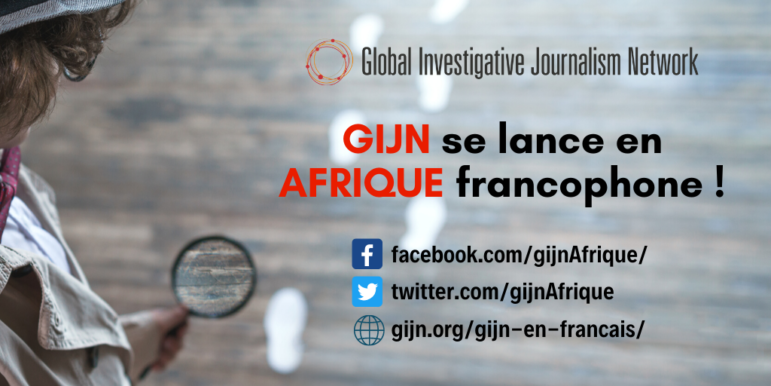

GIJN Launches Francophone Africa Edition
 We’re delighted to announce that GIJN has launched a new initiative: GIJN Afrique. We’ll be sharing the best investigative tips and tools, groundbreaking stories, grants and fellowships, data sets and more, in French, with a focus on French-speaking countries across the African continent. Readers can:
We’re delighted to announce that GIJN has launched a new initiative: GIJN Afrique. We’ll be sharing the best investigative tips and tools, groundbreaking stories, grants and fellowships, data sets and more, in French, with a focus on French-speaking countries across the African continent. Readers can:
- Follow GIJN Afrique on Facebook and Twitter.
- Get the latest stories from our landing page.
These complement our existing regional channels GIJN, GIJN Africa, GIJN in Arabic, GIJN in Bangla, GIJN in Chinese, GIJN in French, GIJN in Russian, GIJN in Spanish,and GIJN in Urdu.
Join us in welcoming Maxime Domegni as GIJN Francophone Africa editor.
 Maxime Domegni is an award-winning journalist with years of experience in investigative journalism. Previously, he was editor-in-chief of the Togolese investigative newspaper L’Alternative. He has also collaborated with different media organisations, notably with the Swiss-based Fondation Hirondelle as West African Correspondent for the justiceinfo.net website; and with the Dutch organisation RNW Media on the French version of the “This is Africa” website. He was based in Dakar, Senegal for several years, working for BBC Africa as a journalist and planning producer for French-speaking Africa.
Maxime Domegni is an award-winning journalist with years of experience in investigative journalism. Previously, he was editor-in-chief of the Togolese investigative newspaper L’Alternative. He has also collaborated with different media organisations, notably with the Swiss-based Fondation Hirondelle as West African Correspondent for the justiceinfo.net website; and with the Dutch organisation RNW Media on the French version of the “This is Africa” website. He was based in Dakar, Senegal for several years, working for BBC Africa as a journalist and planning producer for French-speaking Africa.









